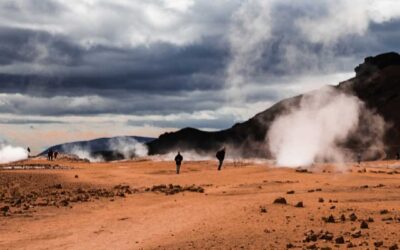It’s no great secret that humans are a significant source of many chemicals and nutrients used by other organisms throughout the world. For instance, plants breath in carbon dioxide, which we emit in gabs, and they also use nitrogen, which we distribute in fertilizer and fix in combustion engines. Both are essential for plant growth, but could it be that too much of them might actually hurt ecosystems?
That’s the basic question behind long-term ecosystem studies, like the ones at Jasper Ridge at Stanford University and the Cedar Creek LTER site in Minnesota. In general, the results of these studies show that an increase in any one essential nutrient increases primary productivity (plants grow more), though at the expense of diversity (some plants evolved to maximize a certain nutrient, and they’ll outperform the rest when fertilized). This is not a particularly surprising result.
A recent study looked at concurrent increases in nitrogen and CO2, with some counterintuitive results: both elevated CO2 and nitrogen reduced diversity (by 2% and 16%, respectively), but when combined, diversity dropped by only 8%. When plants can grow more robustly under higher levels of CO2, they tend to crowd out other species that would otherwise survive in the understory by outcompeting them for light resources. When nitrogen is added, those species that have adapted to use nitrogen quickly respond and grow, again outcompeting other plants for other limited resources. But instead of these effects combining to form a mega-growth of all-powerful and gargantuan plants, the two nutrients essentially offset each other (though, notably, diversity still dropped). The nutrients affect different processes involved in production and diversity, but instead of their negative effects being additive, they oppose each other.
So, great. Nitrogen pollution can ameliorate some of the negative effects of increased carbon dioxide. Is widespread nitrogen fertilization, then, the solution to biodiversity loss caused by an increase in CO2? No. For one, nitrogen fixation occurs in localized areas, often driven by agricultural fertilizer use or urban environments with lots of cars, whereas CO2 is increasing relatively diffusely across the entire globe. We don’t even have the capacity to evenly distribute fertilizer over the earth’s landmass, much less control it to the degree these scientists did. For two: really? Our solution to combat one form of pollution is to pollute using something else?
Let’s stick with what we know: the effects of dumping large amounts of carbon dioxide into the atmosphere are bad, and the effects of dumping too much nitrogen into the environment are bad, and we should stop doing both.
Brought to you by terrapass.com
Featured image








